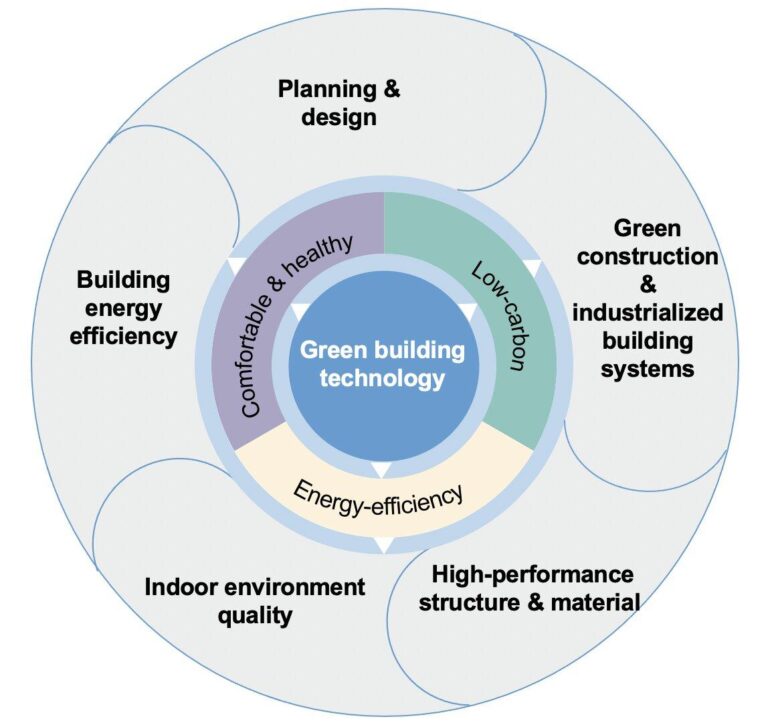China’s ambitious green initiatives have positioned the nation as a pivotal player in global environmental efforts. However, despite the government’s extensive commitments to sustainability, investors remain cautious, signaling that current ESG (Environmental, Social, and Governance) frameworks and disclosures fall short of international expectations. This gap between China’s green policies and investor demands underscores a complex landscape where regulatory ambition meets market skepticism, raising critical questions about transparency, accountability, and the future of sustainable investing in the world’s second-largest economy.
China’s Ambitious Green Agenda Faces Investor Skepticism Amid Regulatory Gaps
Despite China’s bold commitments to reduce carbon emissions and ramp up renewable energy production, many international investors remain cautious. The country’s rapid policy shifts and persistent lack of transparency in environmental regulations have led to fluctuating confidence levels in its ESG (Environmental, Social, and Governance) investment landscape. Key concerns include inconsistent application of green standards across provinces and insufficient disclosure requirements, which make it challenging for investors to accurately assess the environmental impact of their portfolios.
Primary investor reservations include:
- Regulatory ambiguity hindering long-term financial forecasting
- Inadequate enforcement of environmental compliance
- Limited third-party verification on green projects
- Unclear pathways for sustainable corporate governance
| Investor Concern | Impact on ESG Evaluation |
|---|---|
| Regulatory Uncertainty | High volatility in green investments |
| Data Transparency Issues | Difficulty in accurate risk assessment |
| Fragmented Enforcement | Uneven progress across sectors |
ESG Reporting in China Struggles with Transparency and Standardization Challenges
Despite China’s ambitious environmental goals, ESG disclosure remains mired in issues that hinder investor confidence. Corporations often issue inconsistent reports lacking critical data, making it difficult to assess genuine sustainability performance. The absence of a unified framework results in a fragmented landscape where companies choose disparate metrics and methodologies. Investors face challenges in comparing ESG scores across industries or even within the same sector, complicating decision-making and diluting the impact of green initiatives on capital flows.
Key obstacles include:
- Varying standards: Multiple governing bodies offer competing ESG guidelines with little harmonization.
- Opaque data: Limited third-party verification weakens the credibility of reported figures.
- Sectoral biases: Heavy emphasis on environmental factors often sidelines social and governance considerations.
| Issue | Impact | Current Status |
|---|---|---|
| Data Inconsistency | Impairs cross-company comparisons | High |
| Regulatory Fragmentation | Confuses reporting requirements | Moderate |
| Verification Gaps | Questions data authenticity | High |
Calls for Enhanced Corporate Accountability and Clearer Guidelines to Boost ESG Confidence
Amid growing environmental ambitions, investors are urging Chinese corporations to adopt more rigorous accountability measures to ensure that sustainability claims translate into tangible outcomes. The current lack of standardized metrics and transparent reporting frameworks has led to skepticism about the integrity of Environmental, Social, and Governance (ESG) initiatives within the region. Market participants emphasize the urgent need for clearer guidelines that align with global best practices, which would enable better risk assessment and improve decision-making processes.
Key demands from the investment community include:
- Uniform ESG disclosure standards to ensure comparability across companies and sectors.
- Third-party verification to boost credibility and reduce greenwashing risks.
- Enhanced regulatory oversight to enforce compliance and protect investor interests.
Without these cohesive efforts, many worry that confidence in China’s green transition will remain fragile, potentially sidelining the country from becoming a true leader in sustainable finance.
| Investor Concern | Requested Action | Potential Impact |
|---|---|---|
| Inconsistent Reporting | Standardized ESG Metrics | Improved Comparability |
| Greenwashing Risks | Mandatory Third-Party Audits | Higher Trust Levels |
| Regulatory Gaps | Stricter Governance Policies | Stronger Compliance |
In Conclusion
As China continues to assert itself as a global leader in sustainability initiatives, the gap between ambitious government targets and the practical realities faced by investors remains evident. While the country’s green plan marks a significant step forward in environmental policy, stakeholders are calling for clearer regulatory frameworks, enhanced transparency, and more robust enforcement to truly unlock the potential of ESG investing. As the world watches closely, how China navigates these challenges will be critical in shaping the future of sustainable finance-both domestically and on the international stage.




